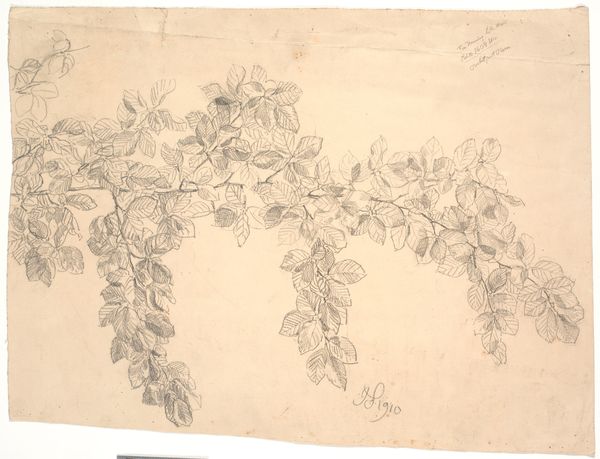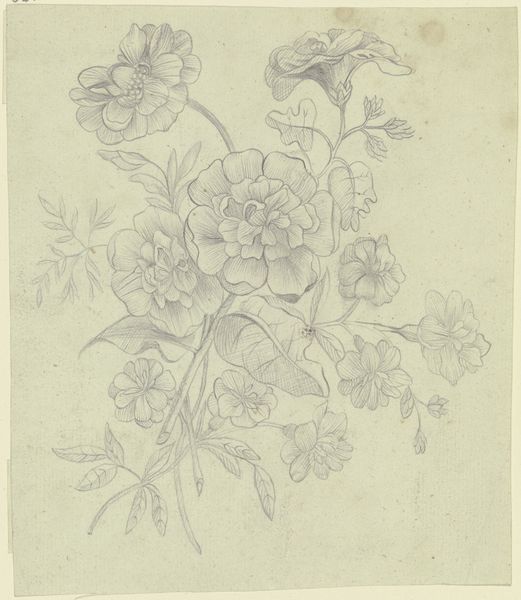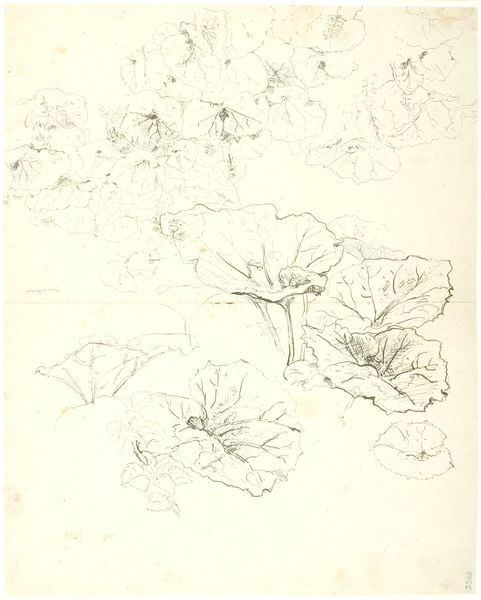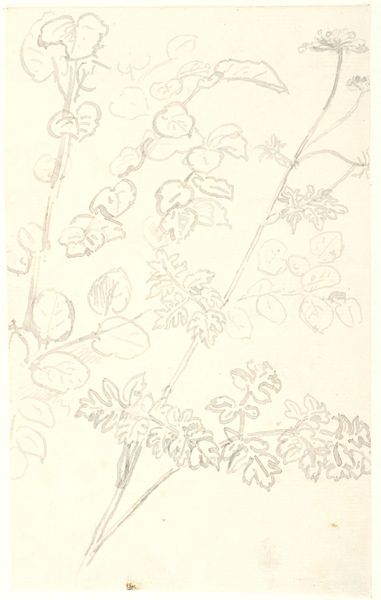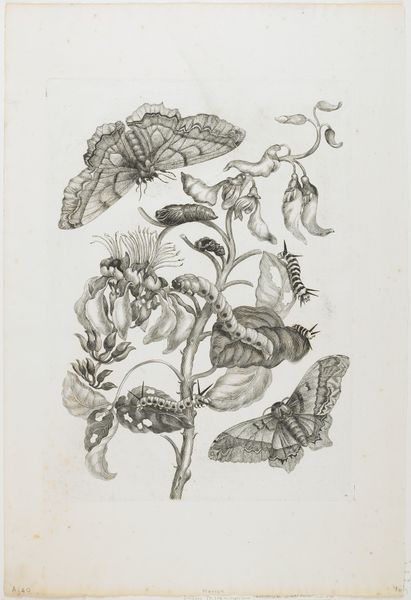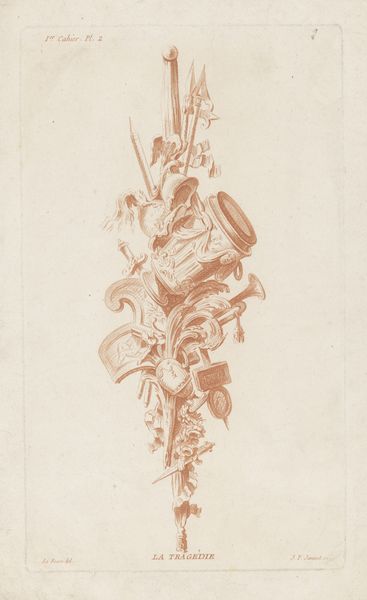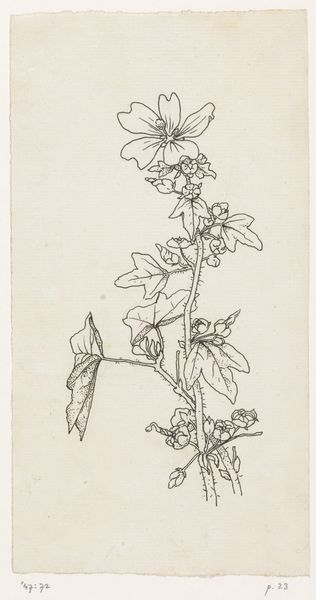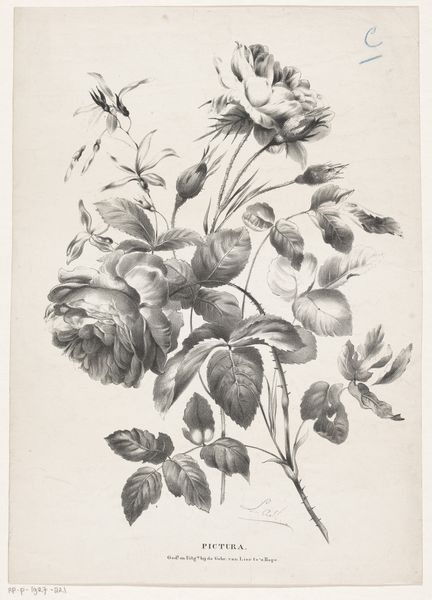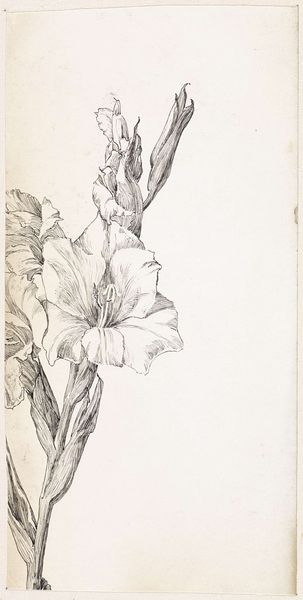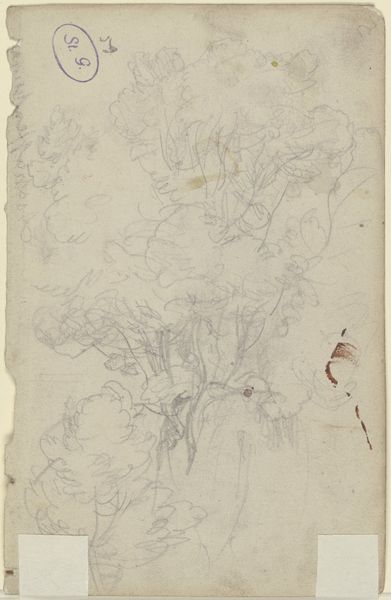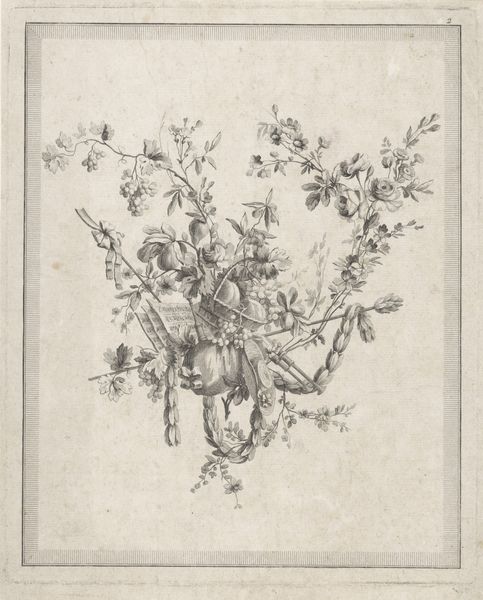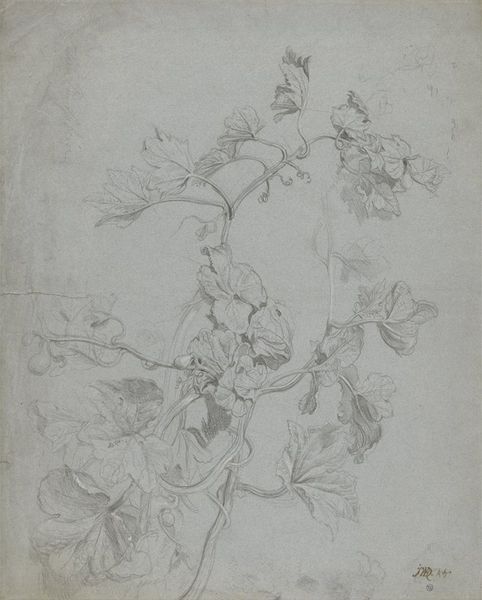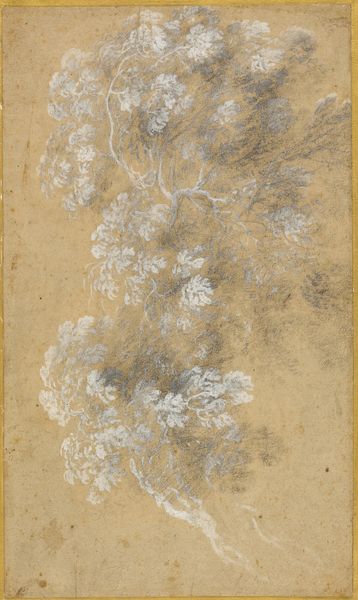
drawing, ink, pen
#
drawing
#
ink drawing
#
pen sketch
#
ink
#
romanticism
#
pen
Dimensions: 203 mm (height) x 158 mm (width) (bladmaal)
Curator: We're looking at "Plantestudier" by Dankvart Dreyer, an ink drawing made sometime in the 1840s. Editor: It has this airy, botanical feel—almost like peeking into a well-loved sketchbook. The looping inkwork brings the leaves to life. There's a casual grace, a study that hints at a deep understanding of how plants grow. What do you make of the composition, the forms Dreyer captures? Curator: Structurally, note how Dreyer uses the density of line to define the foreground foliage. The bolder strokes lend the plants presence, while the fainter, sketch-like strokes create a sense of depth, suggesting further botanical elements fading into the background. There's a deliberate interplay between positive and negative space at work here. Editor: Positive and negative space working together… a yin and yang of observation! This makes me think that Dreyer might have found joy in these small details. Do you think these were studies for some later masterpiece? Curator: It's very possible, the Romantic era prized direct observation and meticulous study, so we can appreciate the work not as secondary or subordinate, but valued in its own right. Also note Dreyer's focus—the subtle variations in leaf shapes, the delicate structure of the budding flowers… He wasn't just representing plant forms. He was analyzing their inherent structure and qualities of life itself. Editor: Like a botanical poet with a pen! I wonder what kind of plants he was capturing...they must have held secrets for him. I am getting this idea of an alchemist or gardener who really gets into it, smelling dirt and sunlight! Curator: The materials also speak to this feeling, pen and ink drawing facilitates quick documentation and easy study, thus allowing Dreyer to analyze each shape with a keen focus. Editor: "Plantestudier"... simple title, but look what sprouts from these inks! The dialogue between artist and nature is just marvelous and it provides endless joy. Curator: Indeed, and observing it reminds us to truly value both the artistic process and our surrounding nature, and how these things have a fundamental relationship.
Comments
No comments
Be the first to comment and join the conversation on the ultimate creative platform.
